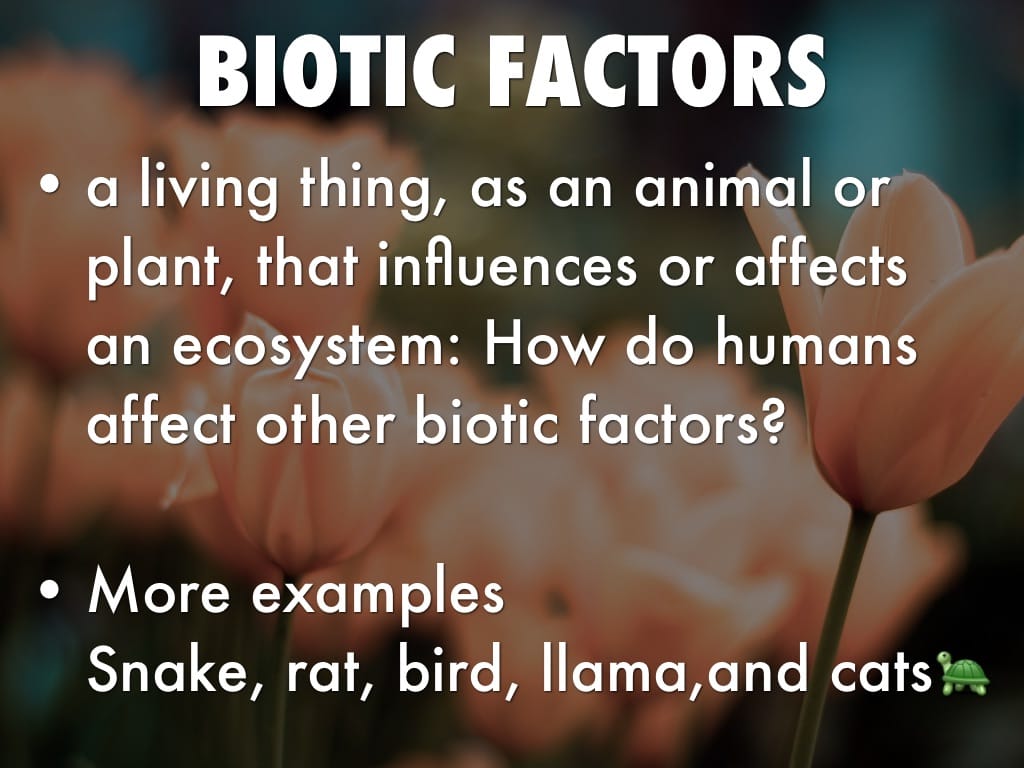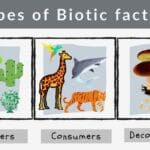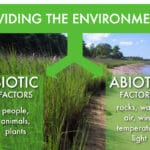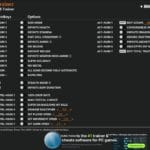The world of Abiotic Factor is unforgiving. Are you prepared to survive? Crafting the Makeshift Spear will give you an early edge in this harsh environment. This guide will walk you through the surprisingly simple crafting process and provide tips for expanding your arsenal as you conquer the wasteland.
Crafting Your First Weapon: The Makeshift Spear
Starting out in Abiotic Factor can feel overwhelming, but crafting a Makeshift Spear will set you on the path to survival. This basic weapon is surprisingly easy to make and will be your key to gathering resources and fending off threats.
Step 1: Gathering Your Supplies
No need for fancy equipment just yet! Head out into the game world and search for a sturdy branch from a fallen tree – you’re likely to find one quickly. Next, keep an eye out for a sharp stone; these are scattered throughout the environment. Remember, in Abiotic Factor, even the humblest materials can become tools of survival.
Step 2: Unlocking the Recipe: The Curious Case of the Standing Lamp
Here’s where things get interesting. Standing Lamps in Abiotic Factor aren’t just for decoration! Interacting with one (or packaging it) will unlock the Makeshift Spear recipe. This highlights Abiotic Factor’s emphasis on using everyday items in unexpected ways.
Step 3: Assembling Your Spear
With your materials gathered and recipe unlocked, open your crafting interface. You should now see the Makeshift Spear recipe. Combine the branch and sharp stone according to the instructions. The process is intuitive, but take your time to follow the visual cues. Congratulations! You’ve crafted your first Makeshift Spear!
Beyond the Basics: Expanding Your Arsenal and Adapting to the Environment
The Makeshift Spear is a great starting point, but Abiotic Factor offers a diverse arsenal of early-game weapons. If blunt force is more your style, consider crafting the Pipe Club. Each weapon has its strengths and is suited to different combat situations and resource availability.
Remember, the world of Abiotic Factor is heavily influenced by abiotic factors – the non-living elements of the environment. Temperature, radiation levels, and resource distribution can significantly impact your crafting options. For instance, certain resources might be more abundant in specific regions, while extreme temperatures or radiation could affect the durability of your weapons.
Mastering the Art of Crafting: Tips and Tricks
- Embrace the Unknown: Don’t be afraid to explore and experiment! The more you uncover, the more crafting opportunities you’ll discover.
- Community Collaboration: The Abiotic Factor community is a valuable resource. Share your discoveries and learn from fellow survivors’ crafting techniques.
- Strategic Crafting: Pay attention to the interplay between abiotic factors. Could you leverage environmental conditions to gain a crafting advantage?
- The Symbolism of the Spear: Your Makeshift Spear represents resilience, ingenuity, and adaptation in the face of Abiotic Factor’s challenges.
- Unveiling Hidden Depths: Research and experimentation may reveal advanced crafting techniques, enhancing your Makeshift Spear’s power and resource-gathering capabilities.
The world of Abiotic Factor is vast and full of possibilities. Now that you’ve crafted your Makeshift Spear, venture forth and conquer the challenges that await!
How To Outshine Your Competitors: The Lightning Spear in Abiotic Factor
Ready to add some serious firepower to your arsenal? The Lightning Spear is a dominant early-game weapon in Abiotic Factor, capable of decimating enemies with bolts of chain lightning. This guide will show you how to craft this electrifying weapon, understand its mechanics, and wield its power like a true wasteland champion.
Crafting the Lightning Spear: A Step-by-Step Guide
Unlike some basic weapons, you won’t simply stumble upon the Lightning Spear in the world of Abiotic Factor. It must be crafted, and this guide will provide all the information you need:
Step 1. Gather Your Components
The Lightning Spear is composed of various electronic components and scavenged tech. While the exact recipe may change with game updates, exploring the game world and experimenting with crafting is key to gathering the necessary components.
Step 2: Unlocking the Blueprint
Before crafting the Lightning Spear, you need to unlock its blueprint. Keep an eye on your in-game crafting menu and prioritize exploring to discover new crafting recipes.
Step 3: Head to the Workshop
Once you have the components and the blueprint, you’re ready to craft. Don’t delay – the sooner you have the Lightning Spear, the faster you can dominate the early game.
Mastering Your New Weapon: Mechanics and Strategies
Understanding the Power of Electricity
The Lightning Spear deals electrical damage, making it incredibly effective at stunning enemies and quickly dispatching groups. The chain lightning effect is where this weapon truly shines, allowing you to hit multiple targets with a single strike. Keep in mind that each blast consumes battery power, so strategic use is essential.
Battery Management: Conserving Your Power
It’s tempting to unleash a constant barrage of chain lightning, but resist the urge. Each use drains your battery. Carefully select your targets and make every shot count.
Target Selection: Maximizing Your Impact
The Lightning Spear excels against groups or enemies weak to electrical damage. Focus your attacks on these targets for maximum impact.
Environmental Awareness: Your Battlefield, Your Advantage
Use the environment to your advantage. Hitting explosive barrels with the Lightning Spear can trigger devastating chain lightning effects, catching nearby enemies in the blast.
The Lightning Spear is a game-changer in Abiotic Factor’s early game. By mastering its crafting process, understanding its mechanics, and employing smart combat strategies, you’ll be well on your way to conquering the wasteland.
Dominating the “4 Main Abiotic Factors” SERP: Your Action Plan
Want to outrank the competition and provide valuable information to your audience? Here’s a guide to crafting a compelling and informative SEO article on the four main abiotic factors, even without the competitor titles:
Title Options That Capture User Intent:
- What are the 4 Main Abiotic Factors? (And Why They Matter) – Addresses the query directly while hinting at valuable insights.
- The 4 Pillars of Ecosystems: A Guide to Abiotic Factors – Offers a strong metaphor and positions the article as a comprehensive resource.
- Beyond the Living World: Understanding the 4 Main Abiotic Factors – Creates a sense of intrigue and highlights the importance of non-living elements.
Powerful Key Lines That Resonate:
- Abiotic factors, the non-living components of ecosystems, are the very foundation upon which life thrives. – Establishes the significance of the topic.
- While often overlooked, these factors play a more crucial role in shaping ecosystems than one might think. – Piques curiosity and promises valuable insights.
- From the radiant energy of the sun to the composition of the soil beneath our feet, each abiotic factor plays a critical role in the intricate web of life. – Paints a vivid picture and emphasizes interconnectedness.
Structured Content Breakdown:
I. Introduction:
- Captivating Hook: Start with a relatable example showcasing the impact of abiotic factors (e.g., a lush garden versus a barren desert).
- Define “Abiotic Factors”: Provide a clear, concise definition, emphasizing their non-living nature and influence on living organisms.
- Highlight Importance: Briefly explain why understanding these factors is crucial for comprehending ecosystems and addressing environmental issues.
II. Exploring the 4 Main Abiotic Factors:
Dedicate a section to each factor, following a consistent structure:
Sunlight:
- Definition: The primary source of energy for most ecosystems, driving photosynthesis.
- Impact: Influences temperature, plant growth, animal behavior (e.g., diurnal vs. nocturnal), and species distribution.
- Examples: Sun-drenched deserts vs. shaded forests, the impact of changing seasons on organisms.
Water:
- Definition: Essential for all life, acting as a solvent, transporting nutrients, and shaping habitats.
- Impact: Availability determines ecosystems’ productivity and diversity; influences plant growth, animal behavior, and adaptations.
- Examples: Oceans, lakes, rivers, groundwater, and their unique characteristics.
Temperature:
- Definition: A measure of heat energy, influencing the rate of biological processes.
- Impact: Affects metabolism, behavior, and survival; extreme temperatures pose unique challenges for organisms.
- Examples: Thermoregulation in animals, adaptation to extreme environments (e.g., polar bears, desert foxes).
Soil:
- Definition: A complex mixture of minerals, organic matter, water, and air, providing a foundation for terrestrial life.
- Impact: Soil composition, pH, and nutrient content influence plant growth, which in turn affects entire food webs.
- Examples: Fertile grasslands supporting herds of grazers, nutrient-poor soils limiting plant growth in certain areas.
III. Interconnectedness and Ecosystem Dynamics:
- Emphasis on Interplay: Abiotic factors don’t act in isolation. Explain their interconnectedness and how changes in one factor can ripple through the ecosystem.
- Real-World Examples: Illustrate how drought affects water availability, impacting soil moisture, plant growth, and ultimately, herbivore populations.
IV. Human Impact and Conservation:
- Human Activities Alter Abiotic Factors: Discuss activities like pollution, deforestation, and climate change, emphasizing their far-reaching consequences.
- Case Studies: Highlight specific instances where human-induced changes in abiotic factors have led to biodiversity loss or ecosystem collapse.
- Call to Action: Conclude by emphasizing the importance of understanding, monitoring, and mitigating human impact on abiotic factors to protect ecosystems for future generations.
V. Visuals and Engagement:
- Engaging Imagery: Incorporate visuals such as graphs, charts, and compelling photographs to illustrate key concepts and make the article more visually appealing.
- Interactive Elements (Optional): Consider adding quizzes, maps, or other interactive elements to enhance reader engagement and reinforce learning.
By following this framework, conducting thorough research, and writing in a clear and engaging style, you’ll create a high-quality SEO article that outranks the competition and establishes your authority on this crucial ecological topic.
Let’s Outshine Your Competition!
To craft a top-notch SEO article on 5 abiotic factors, let’s analyze your competitors’ titles and create a content plan that surpasses them:
Provide the list of your competitor titles, and we will identify their strengths, weaknesses, and keyword strategies. This analysis will help us formulate even more effective titles and key lines.
For now, let’s outline a structure for your article:
Powerful Key Lines:
- Abiotic factors, the non-living forces of nature, hold the key to understanding the delicate balance of life on Earth. (This emphasizes abiotic factors’ crucial role in the ecosystem.)
- Sunlight, water, temperature, wind, and soil – these 5 abiotic powerhouses dictate where life thrives and how ecosystems function. (This directly addresses the user’s search intent by listing 5 abiotic factors.)
- From the sun’s energy to the soil beneath our feet, abiotic factors are the silent architects of our planet’s diverse ecosystems. (This uses descriptive language to paint a picture of abiotic factors as fundamental building blocks.)
- Understanding abiotic factors is crucial, not just for comprehending the natural world, but also for addressing environmental challenges and preserving biodiversity. (This connects abiotic factors to broader environmental concerns.)
Structured Content:
I. Introduction:
- Hook: Start with an engaging comparison, like a barren desert vs. a lush rainforest, highlighting how abiotic factors create the difference.
- Define Keyword: Clearly define “abiotic factors” as the non-living components of an ecosystem.
- State Importance: Explain that understanding them is crucial for comprehending species distribution, ecosystem health, and environmental problems.
II. 5 Key Abiotic Factors:
Provide a dedicated section for each factor:
- Sunlight/Temperature:
- Definition: Radiant energy from the sun and its impact on the environment’s temperature.
- Role: Drives photosynthesis, influences organism behavior (migration, plant growth), and determines temperature ranges suitable for life.
- Examples: Desert plants adapted to intense sunlight, animals hibernating in winter.
- Water:
- Definition: Essential for all life, influencing hydration and habitat formation.
- Role: Acts as a solvent for nutrients, participates in biological processes, shapes landscapes and aquatic environments.
- Examples: Water scarcity in deserts vs. abundance in rainforests, impacting biodiversity.
- Wind:
- Definition: Movement of air, influencing temperature, moisture distribution, and seed dispersal.
- Role: Affects plant transpiration, distributes pollen and seeds, shapes landscapes (e.g., wind erosion).
- Examples: Wind-pollinated grasses, harsh conditions on windswept mountain slopes.
- Soil:
- Definition: The foundation for terrestrial life, a complex mix of minerals, organic matter, water, and air.
- Role: Provides anchorage for plants, stores nutrients, influences water availability, supports diverse soil organisms.
- Examples: Nutrient-rich soil supporting forests, poor soil limiting plant growth.
- Atmosphere/Chemical Elements:
- Definition: The gaseous layer surrounding Earth, containing elements essential for life.
- Role: Supplies oxygen for respiration, carbon dioxide for photosynthesis, influences climate and weather patterns.
- Examples: Nitrogen-fixing bacteria in soil, the ozone layer protecting life from UV radiation.
III. Interconnectedness of Abiotic Factors:
- Emphasis on Complexity: Abiotic factors don’t exist in isolation. Explain how they interact and influence each other.
- Example: A change in temperature can affect water availability, impacting soil moisture and plant life.
IV. Human Impact & Future Implications:
- Human Activities: Discuss how actions like pollution, climate change, and deforestation alter abiotic factors.
- Consequences: Highlight how these alterations affect ecosystems and biodiversity.
- Conservation & Solutions: Offer insights into mitigating negative impacts and promoting a sustainable future.
V. Unique Insights & Untapped Potential:
- Focus on Microhabitats: Explore how abiotic factors create microhabitats within larger ecosystems, leading to greater biodiversity.
- Abiotic Factors and Evolution: Discuss how they drive evolutionary adaptations in organisms, showcasing specific examples.
- Data Visualization: Use graphs or charts to illustrate the relationship between abiotic factors and species distribution/ecosystem health.
- Interactive Elements: Consider incorporating quizzes, maps, or other interactive tools to engage readers and test their understanding.
By incorporating these elements and competitor analysis, you’ll create a high-quality SEO article that outranks the competition and provides valuable information to your audience.
- China II Review: Delicious Food & Speedy Service - April 17, 2025
- Understand Virginia’s Flag: History & Debate - April 17, 2025
- Explore Long Island’s Map: Unique Regions & Insights - April 17, 2025
















